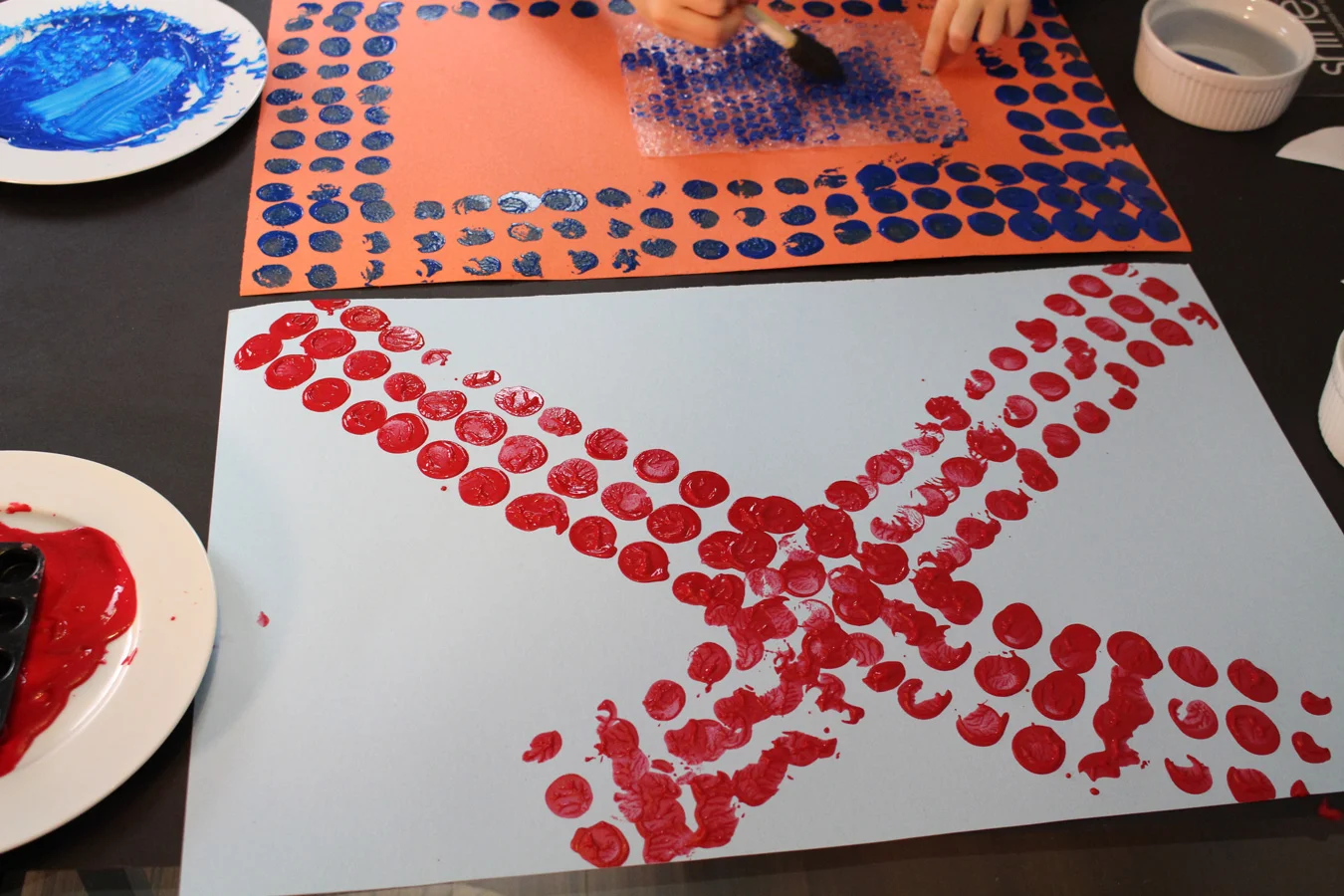Written by Aaron Goldschmidt | Photographed by Lynn Levoy
Exposing our children to a variety of art and performance is one of the perks to living in a city with so much culture. That’s also what I do at Shine, we focus on learning and growing through creativity, exploration and acceptance. But often times, the act of translating the ideas behind the art so that kids can experiment with a similar style can be daunting. We like to find ways to make art and culture both accessible and fun for kids.
For our first workshop, we chose Stuart Davis due to his upcoming show at the Whitney this past spring. Davis is an American-born artist, hailing from Philadelphia and later moved to New York. He was inspired by the city and culture around him, from jazz music to city life to the energy of the streets. His work was a precursor to the Pop-Art movement, where he took notes from Cubanism and worked in Modernism and Abstract expressionism.
Since Davis was inspired by jazz, we played vintage jazz music from the 20’s and 30’s during the lesson and project. Bringing in the use of other senses often inspires kids and adds another level of authenticity to their creations. Though Davis was a painter, we did the project with colored construction paper as it was cleaner and easier to do at home. We selected a color of brightly-colored construction paper. Using a contrasting paint, we printed on top of the construction paper with either a circular stamper - we used the base to a glue stick container - or bubble wrap. (We love finding old items from around the office to “upcylce” for our projects.) Mimicking the pop-art movement, we stamped dotted patterns onto the paper as desired without any “organized” stamping. Once this step is done, we set the construction paper aside to dry.
With scissors, we began cutting shapes out of various different brightly colored construction paper. The shapes can be curved, straight, or jagged - variety is great! Additionally, the shapes can be ones we know (squares, circles, etc) or totally random. Davis's work often times simulated a city but never showcased any specific detail.
Whether or not his paintings were representational, his imagery was always simple. (Remind kids who are trying to cut something specific that they can create imagery with how they arrange their shapes.)
Then we began to explore how the various colorful shapes we cut will work together. We asked the kids how they create an interesting juxtaposition. We spent time moving them around and deciding placement. We had them build a story with their shapes.
Once we spent time figuring out how the shapes will work together, we used a glue stick to glue them onto the original piece of construction paper (which should now be dry). Finally, we selected two or three interesting words. We wrote them down using bold, bright, colorful lettering. We cut out the words and glued them to our piece of art. We suggested having the kids use three words to describe themselves. We like action words or words that had energy to reinforce the idea of city life and jazz, but they can use any words they want.
Translating concepts of art into everyday activities doesn’t have to be super challenging. With a little effort, it can offer a worthwhile journey into a child’s imagination, and provide hours of fun, too.
To Find out more Contact
www.shinenyc.net | info@shinenyc.net
As modern mamas living in the over information age, (where everyone is an expert and parenting opinions are shared as freely and easily as an Instagram post) it can be tough to filter through the white noise to find the facts. Naturally, we’d love to consider ourselves wise in all sorts of ways, but the truth is sometimes we’re scrawling SOS in the sand. Good thing we’ve got the guidance and expertise of our own personal rockstars: the people who inspire us on the daily. Our rockstars (our flock) are enthusiasts, professionals and influencers in the fields of wellness, travel, education, style—the list goes on. Each one brings a profoundly different perspective to the table, one informed by their own experiences and outlooks. And that perspective is priceless.
They say it takes a village…we say it takes a flock.










